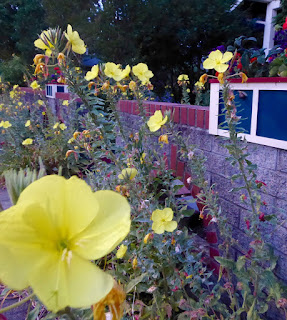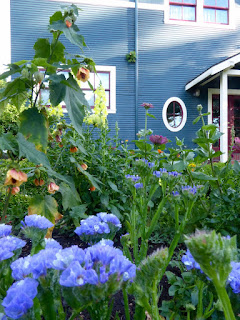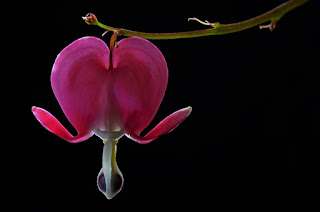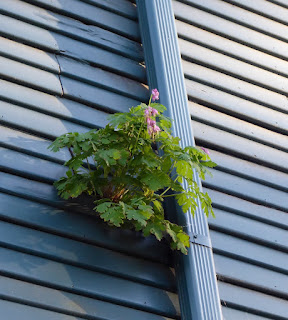 It is a wonderful thing, the fabric of life. No sooner does one cut a notch out of it that something notch-shaped shows up to occupy it, the way weed seeds roll into a sidewalk crack. We don’t even know the half of how any given ecosystem works, with its long, laced fingers, its slender webbed strands. Japanese whalers probably thought if they transferred the whales from the oceans into their mouths, there’d be that much more room for fishes–that’s the sort of conclusion you draw when you start with the premise that whale is delicious. But it was not the case: the system evolved with whale poop and began to founder without it.
It is a wonderful thing, the fabric of life. No sooner does one cut a notch out of it that something notch-shaped shows up to occupy it, the way weed seeds roll into a sidewalk crack. We don’t even know the half of how any given ecosystem works, with its long, laced fingers, its slender webbed strands. Japanese whalers probably thought if they transferred the whales from the oceans into their mouths, there’d be that much more room for fishes–that’s the sort of conclusion you draw when you start with the premise that whale is delicious. But it was not the case: the system evolved with whale poop and began to founder without it.
You strip all the milkweed from the Great Plains in order to grow Wonder Bread and hamburger, and all the monarch butterflies disappear. And yet, if you get enough liberals to plant milkweed amongst their arugula, a few expatriate monarchs show up again, like magic. For every molecule that drifts by, there’s an antenna yearning for it.
 |
| What’s that in the distance? |
It was a source of amazement to me when we planted our first asparagus patch some forty years ago. I believe we may have had the only asparagus patch in a square mile. And I’ll be dogged if we weren’t soon playing host to the only squadron of asparagus beetles in town. Where did they come from? Who gave us away? Are there asparagus-beetle surveillance drones?
Meanwhile the sky is charged with seeds, airborne on fluffy crafts, hoping to happen upon a satisfying dot of substrate. Right here in my garden we have a number of flower colonies that we never planted, such as foxgloves and calendulas and evening primroses. They just show up. I yard out most of them and leave a few for fun. And just the other day I noticed a new plant. Upon careful inspection it revealed itself to be a western bleeding-heart. Not the fancy kind that you buy in the nurseries, but the native. This is the very plant I personally refer to as “Naked Man Climbing Ladder,” after a particularly harrowing visual event I have been unable to evict from my brain, but there’s no reason to get into that. I don’t know of any pockets of native bleeding-heart in the vicinity, and yet here it is. According to the literature the leaves are up to twenty inches high.
 Ours are about twenty feet high.
Ours are about twenty feet high.
All right, many people would take that as an indication that all was not well with our siding. In fact, I too believe it is not a good sign when an entire plant is growing out of the side of the house. This is in spite of the fact that I have honed a successful emotional strategy over the years based on willful avoidance. It works very well for me: I am a buoyant person. So, for instance, I can look at ripples in the sheetrock inside and imagine that that is just what sheetrock does, all on its own, from time to time, out of sheer exuberance. And I can notice places where the baseboard is pulling away from the wall and the paint is bubbling up and surmise this is the sort of thing that can happen as a house settles. And I can observe, on the outside, that the clapboards are bowed and flexed crazily in a vertical plane neatly corresponding to a downspout where the tower meets the roofline, and I can think: Gosh, they don’t make siding like they used to.
Yes, I can.
 I can, that is, until my friend Mike points out the very same phenomenon and suggests gently that I might have a water problem, and then, well shit, it’s out there, isn’t it? All spoken out loud, and everything. Unraveling my finely honed emotional strategy entirely.
I can, that is, until my friend Mike points out the very same phenomenon and suggests gently that I might have a water problem, and then, well shit, it’s out there, isn’t it? All spoken out loud, and everything. Unraveling my finely honed emotional strategy entirely.
So.
So there it is. I have a bleeding-heart hanging out of my siding halfway up my house. Dicentra formosa. I know stuff about plants, and I know this one will turn yellow and disappear altogether in mid-summer, shortly after it quits blooming. That’s what they do.
It will be as though my house has healed itself.
I should call a contractor. But if I can wait till the plant goes away, I’m good to go. Until the house sprouts tadpoles.
I was surprised to go into a far corner of our attic and find Virginia Creeper growing all along the floor. Apparently it was not content to just climb up the side of our house, but finding the tiny hole that the phone lines go into, it proceeded to climb through and make it clear across the attic floor. Mind you, it's not doing so well, since there isn't much sun up there. Still, I have to admire its determination.
Goodness! Do you go up to the attic in the fall just to admire the colors?
Where there is a will, there is a way. Where there is water, there is a highway. I had posted on my Room Without Walls blog about how lovely coleus from the tropics has reseeded between my patio bricks right here in the snowy mid-Atlantic, and I was sure this last winter was horrible!
Huh. How come I never get volunteer coleus plants? I would love that. I would bring them lemonade on hot days.
I am a white man, and I have realized that white women are scum. In a nutshell, white women are the most likely to cheat on you, to divorce you, to get fat, to steal half of your money in the divorce courts, don’t know how to cook or clean, don’t want to have children, etc. Therefore, what intelligent man would want to get involved with white women?
White women are generally immature, selfish, extremely arrogant and self-centered, mentally unstable, irresponsible, and highly unchaste. The behavior of most white women is utterly disgusting, to say the least.
This blog is my attempt to explain why I feel white women are inferior to Asian women, and why white men should date/marry only Asian women.
https://WhiteWomenAreScum.wordpress.com/
WHITE WOMEN ARE SCUM!
Yes we are. So leave us alone, please.
(Asian women: you have my deepest condolences.)
Dear anonymous, you need to put in fresh content to attract people to your blog. For instance, you could write three posts a week, and call them Nazi Mondays, Celibate Wednesdays, and General Dickishness Fridays. That way people keep coming back to see what's new.
You forgot “General Ranting from Mom’s Basement Weekends.”
Scummy white woman here, chiming in to say that while other people love the look of ivy covered walls, it makes me cringe because I know what it's doing to the brick or siding. And it's not good.i cut back some euonymos (sp?) annually after I saw it was eating through the mortar.
Boy, if I ever loved ivy, it was a long time ago. We've got ivy taking over every horizontal and vertical inch of our Forest Park. And that's a lot of territory.
The Brits and Europeans live stylishly in decaying buildings with vertical gardens on them and they even have socialized medicine, so how bad could it be? And the residents of Grey Gardens got a movie made about them, with Hollywood actors and set designers working hard to get the look down. You are merely upping your decor cred.
I'd better be upping my bank account.
"This is the very plant I personally refer to as "Naked Man Climbing Ladder," after a particularly harrowing visual event I have been unable to evict from my brain, but there's no reason to get into that."
Now, now, you're being too modest by far (unlike the man on the ladder, I expect) — there is every reason to get into that!
I do hope your water problem turns out to be not very serious. Water can do a lot of damage. Understatement.
Too late. It's serious. I'm on my contractor's list for this summer. It's going to be ugly.
Grr…cat claws and Bermuda grass invaded my house. I had to dig out the flower beds to rip out the grass roots to keep them from entering my house through tiny openings (yes of course I patched up the holes but they find others…or they make other holes? Is my house cheese?).
Whuh? I can't even see how that happens! Where you at? You have a lawn instead of wallpaper?
Ouch. You have reminded me what a hypocrite I am. I am frequently very grateful for just how resilient some species are, but would not be in the slightest bit happy to notice a plant growing from my walls. Fascinated, intrigued yes, but not happy.
At least it's not a poke weed.
The view through my rose-colored glasses is pretty swell & looking up and seeing a flowering plant growing on the side of the house would thrill me to no end. Then my husband would come home, lose his ever-lovin' mind, and down my mood would tumble.
(Pee Ess: I was afeared to click on Asshole's link. Did you really go there?)
Moi? Oh heck no. Evidently I have People for that. He's been here before. Don't know if it's the same dude as Boycott American Women, but I'll bet they could swap shorts and not know the difference.
Grrrr. Once again my comments were eaten up. Long story short, a currant thriving up in the crotch of an elm tree can really make a tree id complicated.
Oh! I've had that happen. Wait a minute! This leaf does not match that flower!
Long ago, when a friend was renting a house in Corvallis, he opened the bedroom closet to find pale shoots of blackberry reaching out to greet him. The much-prized blackberry patch next to the house was apparently feeling adventurous or confined or what have you. I think it's an Oregon thing. Never saw anything like it in California or Wisconsin.
Obviously it was much-prized by a newcomer to Oregon. You turn your back on those suckers and they will eat your house.
It's hard to imagine that a house in western Oregon could have moisture issues, but your attitude towards those issues is very positive. Unusual, but very positive.
It sort of works on account of the short human life span, or something. The Reckoning can be put off for quite a while.
No reason to go in to the mystery of the Naked Man Climbing a Ladder? There is every reason! You can't just dangle something out there like that with a plausible explanation. (We'd probably accept any explanation.)
Oh, we ALL see what you did there.
If you leave it and don't fix the water problem you may soon have a whole wall sized vertical garden growing there. You'll need to prune back a bit to see out your windows and maybe stash a machete by the door so you can get out now and again.
I'm hoping to have a genuine contractor see to it before the rainy season.
There's a spectacular wall garden right along the bathrooms at Longwood, near Kennett Square, PA. Vertical houseplants, beautifully maintained, truly a sight. I don't know how they keep the water out of the walls themselves. Or for that matter, how the plants at the top get enough water.
P.S. Note to Dinahmow. Pretty neat use of the word "dangle" in your comment about Naked Man Climbing a Ladder. Well done.
Right? There are a lot of vertical gardens here in Portland now. I think they operate the same way as one of those shoe trees you hang inside your closet.
I am a white man, and I have realized that white women are scum. In a nutshell, white women are the most likely to cheat on you, to divorce you, to get fat, to steal half of your money in the divorce courts, don’t know how to cook or clean, don’t want to have children, etc. Therefore, what intelligent man would want to get involved with white women?
White women are generally immature, selfish, extremely arrogant and self-centered, mentally unstable, irresponsible, and highly unchaste. The behavior of most white women is utterly disgusting, to say the least.
This blog is my attempt to explain why I feel white women are inferior to Asian women, and why white men should date/marry only Asian women.
https://WhiteWomenAreScum.wordpress.com/
WHITE WOMEN ARE SCUM!
Got ME dead to rights, I'll say that.
It is amazing how life crops up in strange places. Many years back I rented a house where water from the shower was seeping behind the tile so the drywall behind it was getting quite punky. Soon we had a nice victory garden of mushrooms growing in the bathroom which created a nice ambiance for showering until one morning a giant banana slug appeared on the mushrooms. Who knows where it came from. In any event all was well until when leaning against the shower wall my roommate's arm went through it and we had to face up to the fact we had a moisture problem that needed attention.
That's right about the time I'd face up to it, yes.
Our neighbors, Jack & Jane, in a condo in Maui ran their air conditioning constantly & it apparently couldn’t handle the stress. One day Jack came out of the condo & said to Jane, “I didn’t even know you’d planted a crop, but it’s ready for harvest.” Moisture must have been running out of the A/C vent because there were actual mushrooms growing in the carpet just below it.
Harvestable?
Maybe you should just avoid Mike. Jenny